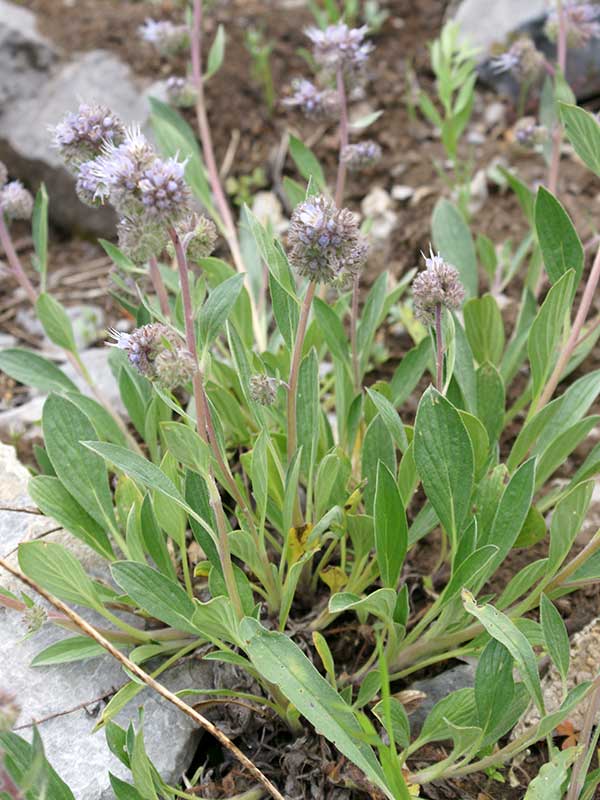Phacelia hastata / silverleaf scorpionweed
- flowers – dull white-ish/purple-ish, numerous in short, compact, coiled clusters
- stamens extend well past petals
- leaves – basal with prominent veins; usually covered with silvery hairs; usually entire
- multiple flowering stems on a single plant
- in a variety of habitats
Also known as: silverleaf phacelia, white-leaf phacelia, timberline phacelia, mountain phacelia
See also: Phacelia heterophylla / varied-leaf scorpionweed
Silverleaf scorpionweed is a perennial with a taproot and usually a branched caudex, allowing it to be at least slightly clonal. Depending on the habitat, it may grow erect or recumbent, with several stems initiating at the same base.
A major distinguishing factor between this and other scorpionweeds, particularly varied-leaf, is that the foliage and stems are more or less silvery – hence the common name – with fine, short, loose hairs. These cover everything except the flowers.
The flowers of P. hastata are numerous and usually in short, compact, coiled clusters (cymes). The petals range from dull white-ish to lavender or dull purple and extend only slightly beyond the sepals. Dull being the operative word. The flowers become darker (but still dull) as they age. Each flower is less than ½ inch long. The filaments, of which there are five, protrude from the bell of the flower conspicuously, with long soft stamen hairs near the middle. Protruding stamens is a common feature of the genus.
In addition to being hairy, the leaves have prominent veins. They are generally much longer than wide, and may be smooth edged or lobed or even divided into leaflets. Smooth edged is the general rule. Most of the leaves are basal.
Phacelia hastata can be confused with P. heterophylla, and is found in similar habitats. The biggest difference is in leaf size, P. hastata having smaller leaves at the base and a denser covering of short hairs. P. heterophylla has fewer hairs and they are bristly. P. hastata also produces several stems from the common base, rather than just one.
Silverleaf scorpionweed grows in flats, scrublands, forests, talus slopes, pumice, at mid- to alpine elevations. It is adapted to hot, dry conditions, and somehow also thrives following disturbance. It also tolerates acid soils and heavy metals and, although these aren’t in the Valley, it can be found in such polluted soils near Butte and Anaconda, Montana.
| Color | |
|---|---|
| Family | |
| Blossom size | |
| Inflorescence size | |
| Inflorescence type | |
| When? | |
| Where? |


